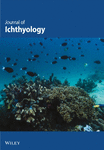Development of polymorphic microsatellite DNA loci for characterizing Oreochromis shiranus subspecies in Malawi
Summary
Six sets of microsatellite primers were developed from Oreochromis shiranus nuclear DNA. These cross-primed in species of the genera Sarotherodon and Tilapia, and were polymorphic in most of the species. The total number of alleles ranged from 18 to 30 per locus; the mean heterozygosity per population ranged from 0.51 ± 0.12 to 0.82 ± 0.03, which is higher than reported in allozyme studies. Five sets of primers were used to characterize five putative populations of O. shiranus, an indigenous mouth brooding tilapia which has been widely distributed in fish farms and reservoirs in Malawi. Two postulated subspecies of O. shiranus (subspecies shiranus and subspecies chilwae) have been difficult to distinguish morphologically. Lake Chilwa, Lake Chiuta and Bunda Reservoir populations cluster together as O. sh. chilwae, while the Lake Malombe and Bishop Reservoir populations form a second cluster as O. sh. shiranus. The assignment of the Chiuta and Chilwa populations of O. sh. chilwae to a single subspecies is consistent with the fact that the two lakes were a single open lake until about 8000–9000 bp. There is no connection between them and the Lake Malawi-Malombe drainage system where the O. sh. shiranus subspecies is found.




